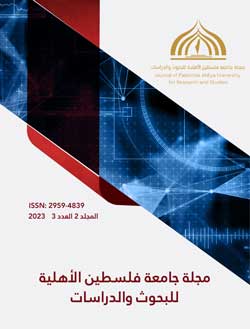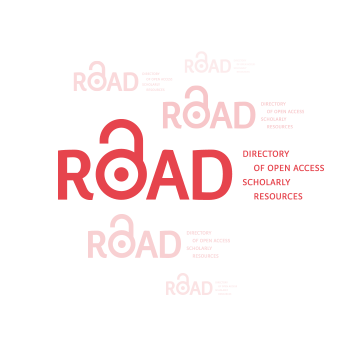تأثير تنفيذ التعلّم المدمج على مواقف طلاب اللغة الإنجليزية كلغة أجنبية في مؤسسات التعليم العالي في فلسطين: الدروس المستفادة من مشروع TEFL-EPAL
DOI:
https://doi.org/10.59994/pau.2023.3.26الكلمات المفتاحية:
التعلم الإلكتروني، مواد تعليمية تفاعلية، تدريس اللغة الإنجليزية كلغة أجنبية، اتجاهات الطلبة، الحرية والفردية، الحواجز، التعاون، التعلم الدمج، المرونة والراحةالملخص
تتناول الدراسة الحالية أثر تطبيق التعليم المدمج والمواد التعليمية التفاعلية واستخدام طرائق التدريس الحديثة الخاصة بالقرن الحادي والعشرين على اتجاهات الطلاب نحو تعلم اللغة الإنجليزية كلغة أجنبية في مؤسسات التعليم العالي في فلسطين. كما تهدف هذه الدراسة إلى تسليط الضوء على فاعلية المصادر الرقمية باعتبارها تعليمًا داعمًا يمكن الاعتماد عليها لتحقيق أهداف التعليم. ولتحقيق أهداف هذه الدراسة قامت الباحثة بتطوير مقياس ليكرت الخماسي. وتم اختبار صدق وثبات هذه الأداة والتأكد منهما. تكونت عينة الدراسة من 208 طلاب من طلاب اللغة الإنجليزية كلغة أجنبية المنتسبين إلى 4 جامعات فلسطينية: جامعة القدس المفتوحة (QOU)، جامعة فلسطين الأهلية (PAU)، جامعة فلسطين التقنية/ خضوري (PTUK)، وجامعة الاستقلال (PASS) خلال فترة الفصل الدراسي الأول من العام الدراسي 2021-2022. وتم استخدام المنهج شبه التجريبي. أشارت النتائج إلى أن تطبيق أساليب القرن الحادي والعشرين في التدريس واستخدام المواد التعليمية التفاعلية أدى إلى تطوير اتجاهات إيجابية نحو تعلم اللغة الإنجليزية كلغة أجنبية في مؤسسات التعليم العالي. وكشفت النتائج أيضًا عن الكثير من المعوقات التي يواجهها الطلاب والتي تعيق تبني تكنولوجيا التعليم وتعزيز التنمية المهنية والمستدامة في التعليم العالي في فلسطين. شملت هذه المعوقات مخاوف سهولة الاستخدام، والقضايا التقنية، وفجوات المعرفة الرقمية، وما إلى ذلك. قدّمت الباحثة بعض التوصيات حول سبل تعزيز تبني المناهج المتمركزة حول الطالب وتكنولوجيا التعليم بهدف تعزيز الاستدامة في تطوير المعلمين في فلسطين.
التنزيلات
المراجع
Akbarov, A., Gönen, K., & Aydogan, H. (2018). Students' Attitudes toward Blended Learning in EFL Context. Acta Didactica Napocensia, 11(1), 61-68.
Baber, H. (2023). Online learning during the COVID-19 pandemic, lessons learned and what’s next?. Qeios ID: TG5VLG, Article, April, 26.
Bakeer, A. (2023). Innovative Pedagogies: The Impact of Interactive Learning on EFL Students’ Attitudes and Individualized Learning Opportunities in HE. Palestine Ahliya University Journal for Research and Studies. 2(2), 1-18.
Bakeer, A., & Bruce, A. (2019, November). Beyond Marginalized Fragmentation: Technology and Innovation in English-Language Learning in Palestinian HEIs. In Conference Proceedings. Innovation in Language Learning 2019.
Bakeer, A. M. (2018). Students’ attitudes towards implementing blended learning in teaching English in higher education institutions: A case of Al-Quds Open University. International Journal of Humanities and Social Science, 8(6), 131-139.
Baxter, G., & Hainey, T. (2023). Remote learning in the context of COVID-19: Reviewing the effectiveness of synchronous online delivery. Journal of Research in Innovative Teaching & Learning, 16(1), 67-81.
Bello, A., Blowers, T., Schneegans, S., & Straza, T. (2021). To be smart, the digital revolution will need to be inclusive. UNESCO Science Report: The race against time for smarter development, 109-135.
Bulman, G., & Fairlie, R. W. (2016). Technology and education: Computers, software, and the internet. In Handbook of the Economics of Education (Vol. 5, pp. 239-280). Elsevier.
English, C. A. (2020). Assessing writing for Cambridge English Qualifications: A guide for teachers. Cambridge Assessment English, 1-26.
Childress, S., & Benson, S. (2014). Personalized learning for every student every day. Phi Delta Kappan, 95(8), 33-38.
Claned. (2023). What is Blended Learning? The Complete Guide. Recover from: https://claned.com
Costley, K. C. (2014). The positive effects of technology on teaching and student learning. Online submission.
Dangwal, K. L. (2017). Blended learning: An innovative approach. Universal Journal of Educational Research, 5(1), 129-136.
Darling-Hammond, L., & Hyler, M. E. (2020). Preparing educators for the time of COVID… and beyond. European Journal of Teacher Education, 43(4), 457-465.
DeCoito, I., & Estaiteyeh, M. (2022). Transitioning to online teaching during the COVID-19 pandemic: An exploration of STEM teachers’ views, successes, and challenges. Journal of Science Education and Technology, 31(3), 340-356.
Dörnyei, Z., Henry, A., & MacIntyre, P. D. (Eds.). (2014). Motivational dynamics in language learning (Vol. 81). Multilingual Matters.
Dziuban, C., Graham, C. R., Moskal, P. D., Norberg, A., & Sicilia, N. (2018). Blended learning: the new normal and emerging technologies. International journal of educational technology in Higher education, 15, 1-16.
Eichelberger, A., & Leong, P. (2019). They think I should teach online! The influence of college faculty’s beliefs about colleagues and institution on online teaching. International Journal for Educational Media and Technology, 13(2), 17–33
Gambari, A. I., Shittu, A. T., Ogunlade, O. O., & Osunlade, O. R. (2018). Effectiveness of blended learning and e-learning modes of instruction on the performance of undergraduates in Kwara State, Nigeria. MOJES: Malaysian Online Journal of Educational Sciences, 5(1), 25-36.
Gomez-Trujillo, A. M., & Gonzalez-Perez, M. A. (2021). Digital transformation as a strategy to reach sustainability. Smart and Sustainable Built Environment, 11(4), 1137-1162.
Gouëdard, P., Pont, B., Hyttinen, S., & Huang, P. (2020). Curriculum reform: A literature review to support effective implementation. OECD Education Working Papers 239, OECD Publishing
Grady, M. (2022). How has teaching changed during the COVID-19 pandemic?. Retrieved from: https://www.buffalo.edu/
Fragkaki, M., Maliq, M. S. A., Bed, S. F. A. A., Farhaneh, S. Z., Najdi, R. E., & Hawamdeh, M. M. K. (2015). ICT in Palestinian Education: Emancipatory Action Research towards 21st C. Skills. Retrieved from: https://t.ly/Fy8gE
Herro, D. (2015). Sustainable innovations: Bringing digital media and emerging technologies to the classroom. Theory Into Practice, 54(2), 117-127.
Ho, I. M. K., Cheong, K. Y., & Weldon, A. (2021). Predicting student satisfaction of emergency remote learning in higher education during COVID-19 using machine learning techniques. Plos one, 16(4), e0249423.
Hori, R., & Fujii, M. (2021). Impact of using ICT for learning purposes on self-efficacy and persistence: Evidence from Pisa 2018. Sustainability, 13(11), 6463.
Howard, S. K., & Mozejko, A. (2015). Teachers: technology, change and resistance. Teaching and digital technologies: Big issues and critical questions, 2(1), 307-317.
Huang, Q. (2018). Examining teachers’ roles in online learning. The EUROCALL Review, 26(2), 3-18.
Irvine, V. (2020). The Landscape of Merging Modalities. EDUCAUSE Review, 55(4).
Johns, S., Wolking, M. (2018). The Core Four of Personalized Learning: The Elements You Need to Succeed. UK, Education Elements.
Johnson, A. M., Jacovina, M. E., Russell, D. E., & Soto, C. M. (2016). Challenges and solutions when using technologies in the classroom. Adaptive educational technologies for literacy instruction (pp. 13-29). New York: Taylor & Francis.
Lange, C. (2023). The Power of Interactive Content in Marketing: Engaging Your Audience with Quizzes, Polls, and More. Retrieved from: https://medium.com/
Li, D. (2022). The Shift to Online Classes during the COVID-19 Pandemic: Benefits, Challenges, and Required Improvements from the Students' Perspective. Electronic Journal of E-Learning, 20(1), 1-18.
Lim, C. P., Wang, T., & Graham, C. (2019). Driving, sustaining and scaling up blended learning practices in higher education institutions: A proposed framework. Innovation and Education, 1(1), 1-12.
Lockman, A. S., & Schirmer, B. R. (2020). Online instruction in higher education: Promising, research-based, and evidence-based practices. Journal of Education and e-Learning Research, 7(2), 130-152.
Meyer, M. W., & Norman, D. (2020). Changing design education for the 21st century. She Ji: The Journal of Design, Economics, and Innovation, 6(1), 13-49.
Pawlak, M. (2018). Investigating the use of speaking strategies in the performance of two communicative tasks: The importance of communicative goal. Studies in Second Language Learning and Teaching, 8(2), 269-291.
Pinkerton, S. (2023). 21st Century Skills for Student Success: A Comprehensive Guide. Retrieved from: https://levelupvillage.com/
Rosell, C. (2020). COVID-19 Virus: Changes in Education| CAE. Retrieved on, 23(08), 2021.
Scott. C. (2015). The Futures of Learning 2: what kind of learning for the 21st century? UNESCO Digital Library. Retrieved from: https://unesdoc.unesco.org
Secapuri, M. R. (2021). Development and Evaluation of Interactive Learning Materials in Teaching Social Studies: A Literature Review Paper. Global Scientific Journal. 9(4), 37-48.
Shraim, K., & Crompton, H. (2020). The use of technology to continue learning in Palestine disrupted with COVID-19. Asian Journal of Distance Education. 15(2), 1-20.
Stockwell, G. (2013). Technology and motivation in English-language teaching and learning. In International perspectives on motivation: Language learning and professional challenges (pp. 156-175). London: Palgrave Macmillan UK.
The University of Toronto. (2012). Towards 2030: The View from 2012 - An Assessment of the University of Toronto’s Progress Since Towards 2030. Retrieved from: https://t.ly/KxaI9
Thompson, S. (2023). Innovative Teaching Strategies. Retrieved from: https://corp.kaltura.com/
Tong, D. H., Uyen, B. P., & Ngan, L. K. (2022). The effectiveness of blended learning on students' academic achievement, self-study skills and learning attitudes: A quasi-experiment study in teaching the conventions for coordinates in the plane. Heliyon, 8(12).
Tran, P. (2018). Enhancing Online Language Learning Task Engagement through Social Interaction. Australian Journal of Applied Linguistics, 1(2), 88-101.
UNESCO. (2005). Teachers matter: attracting, developing and retaining effective teachers. Retrieved from:https://policytoolbox.iiep.unesco.org
Wrahatnolo, T. (2018). 21st centuries skill implication on educational system. In IOP Conference Series Materials Science and Engineering (Vol. 296, No. 1, p. 012036). IOP Publishing.
Yao, Y., Xia, X., Li, X., Wang, P., & Song, C. (2021). The application of multimedia technology in teaching innovation. Journal of Testing and Evaluation, 49(4), 2295-2303.

التنزيلات
منشور
كيفية الاقتباس
إصدار
القسم
الرخصة
الحقوق الفكرية (c) 2023 مجلة جامعة فلسطين الأهلية للبحوث والدراسات

هذا العمل مرخص بموجب Creative Commons Attribution 4.0 International License.
مجلة جامعة فلسطين الاهلية للبحوث والدراسات تعتمد رخصة نَسب المُصنَّف 4.0 دولي (CC BY 4.0)











